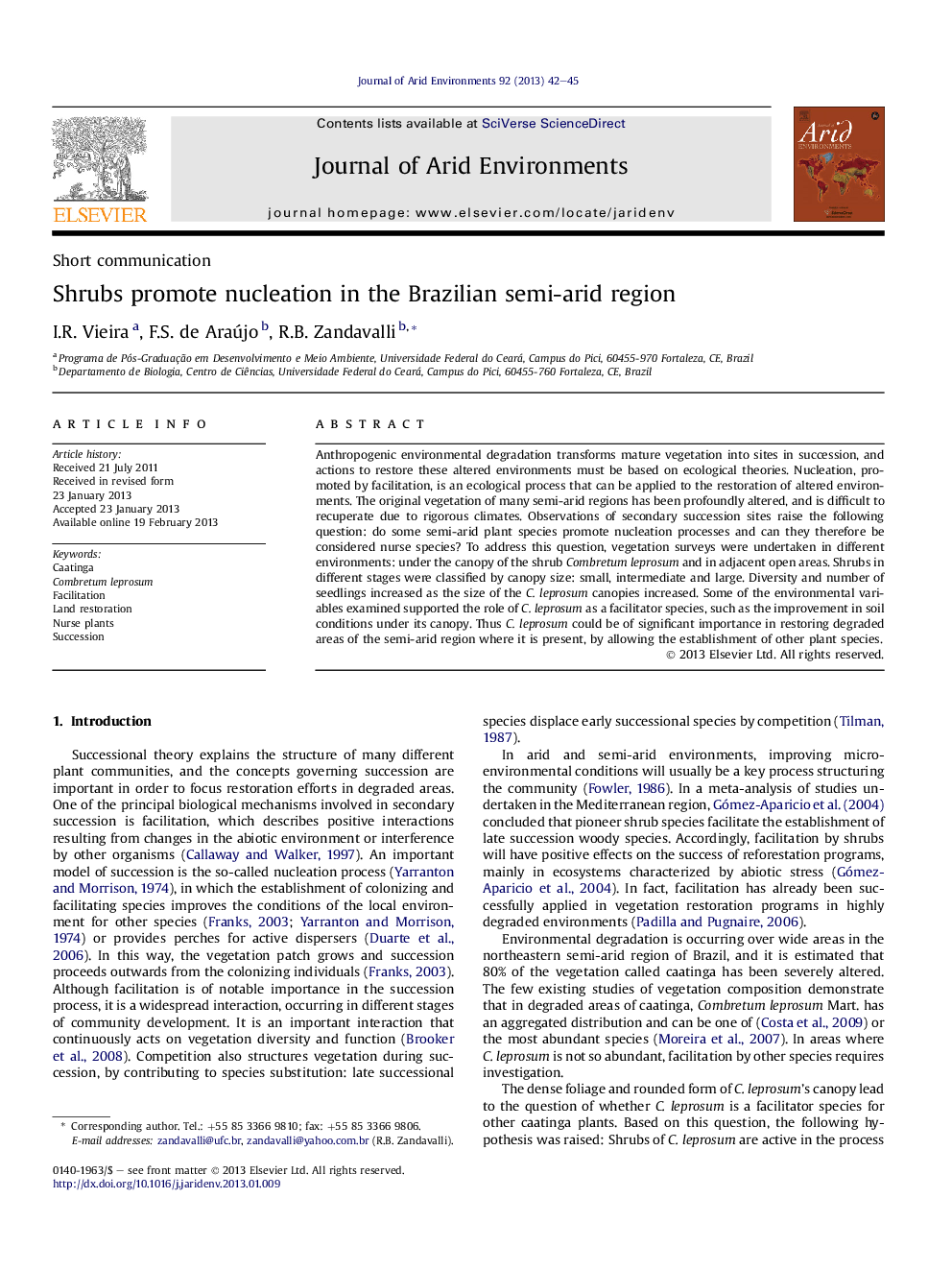| Article ID | Journal | Published Year | Pages | File Type |
|---|---|---|---|---|
| 4393125 | Journal of Arid Environments | 2013 | 4 Pages |
Anthropogenic environmental degradation transforms mature vegetation into sites in succession, and actions to restore these altered environments must be based on ecological theories. Nucleation, promoted by facilitation, is an ecological process that can be applied to the restoration of altered environments. The original vegetation of many semi-arid regions has been profoundly altered, and is difficult to recuperate due to rigorous climates. Observations of secondary succession sites raise the following question: do some semi-arid plant species promote nucleation processes and can they therefore be considered nurse species? To address this question, vegetation surveys were undertaken in different environments: under the canopy of the shrub Combretum leprosum and in adjacent open areas. Shrubs in different stages were classified by canopy size: small, intermediate and large. Diversity and number of seedlings increased as the size of the C. leprosum canopies increased. Some of the environmental variables examined supported the role of C. leprosum as a facilitator species, such as the improvement in soil conditions under its canopy. Thus C. leprosum could be of significant importance in restoring degraded areas of the semi-arid region where it is present, by allowing the establishment of other plant species.
► We surveyed the vegetation under the Combretum leprosum shrub and in the adjacent open area. ► A high diversity and number of young individuals were recorded under C. leprosum. ► C. leprosum improves soil conditions under its canopy. ► C. leprosum could be of significant importance in restoring degraded semi-arid environments.
